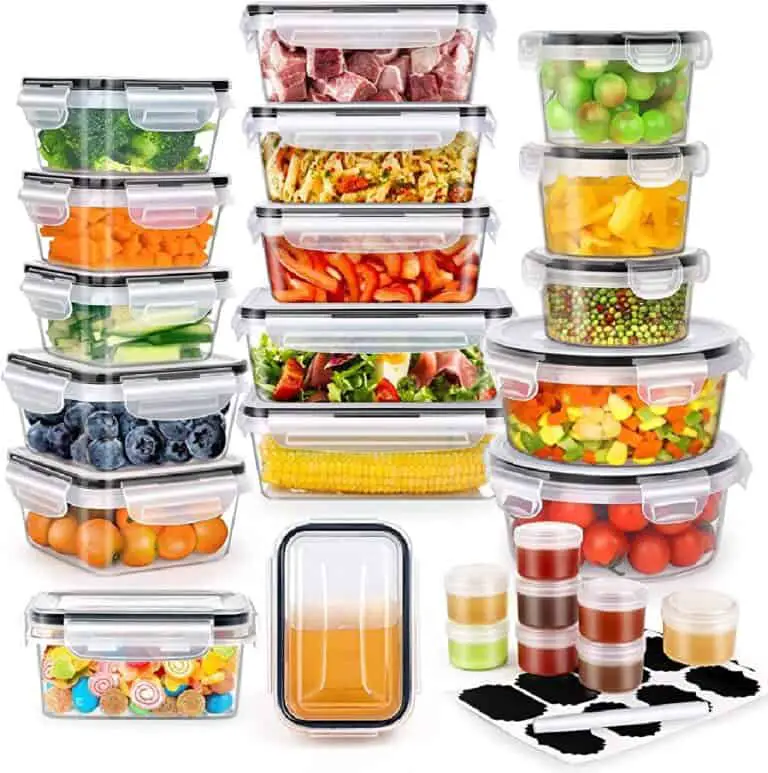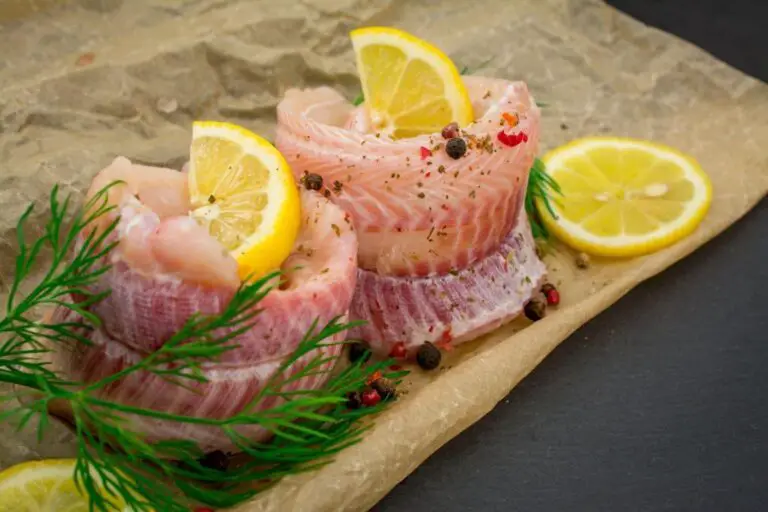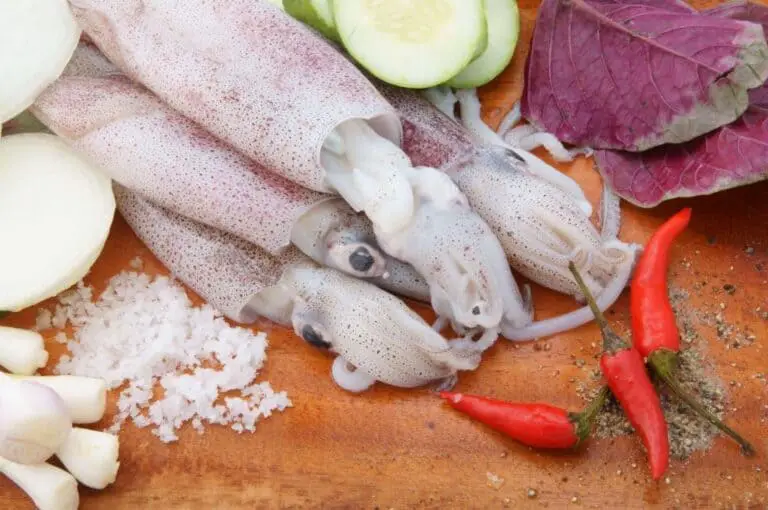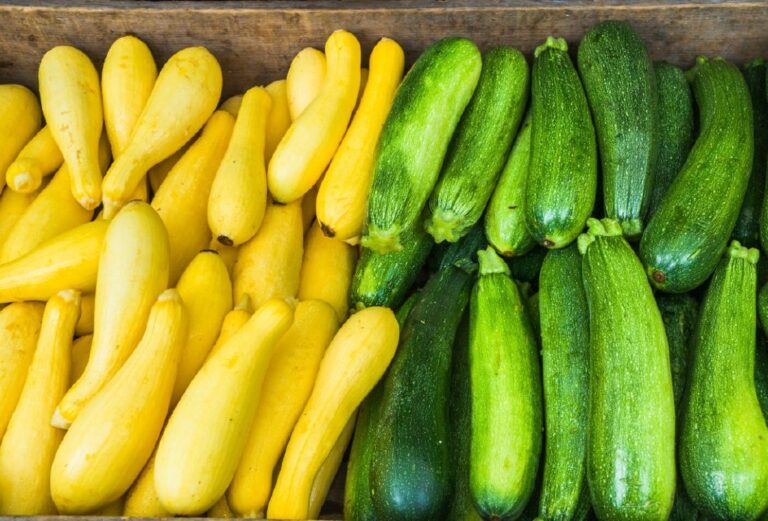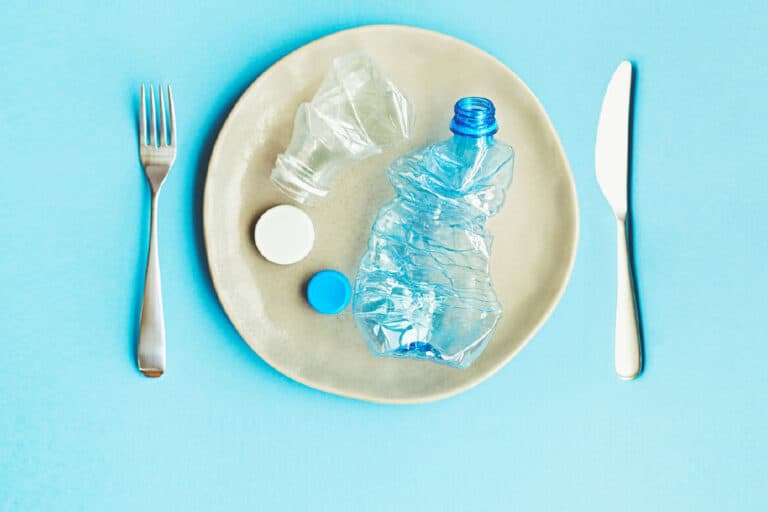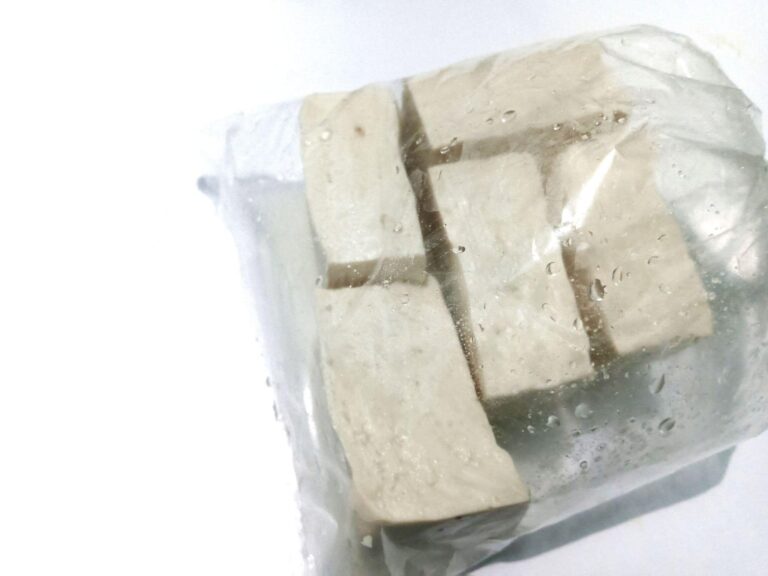What Part of the Rhubarb Do You Eat? Rhubarb Edible Parts and Uses
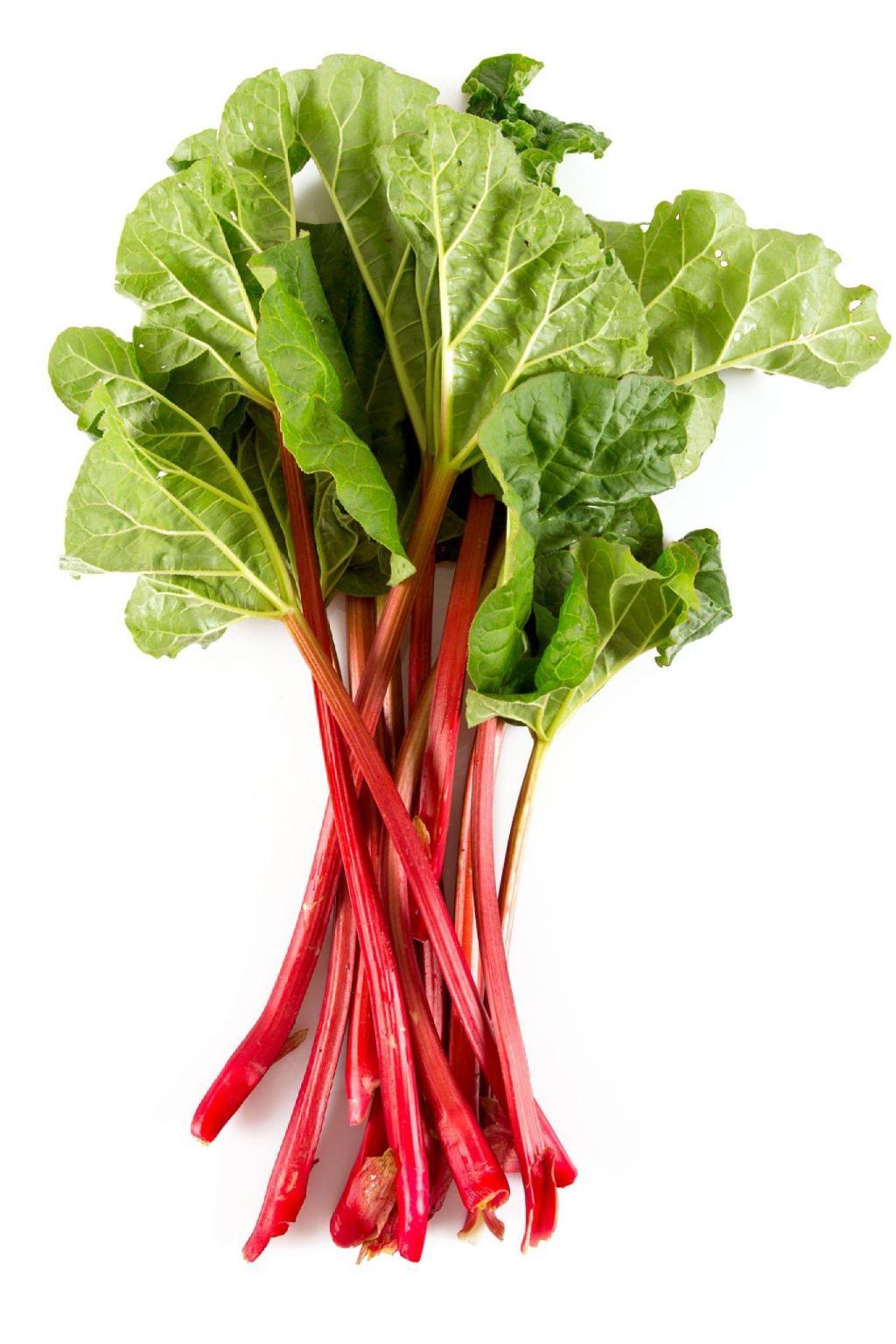
Rhubarb is a vegetable that has been cultivated for thousands of years and is prized for its tart flavor and medicinal properties. But do you know what part of the rhubarb plant is edible?
Many people assume that the leaves are the edible part of the plant, but in reality, rhubard leaves contain toxic compounds and should not be consumed. So, what part of the rhubarb do you eat?
In this article, we’ll explore the edible parts of the rhubarb plant and how they can be used in a variety of dishes. From sweet pies and crumbles to tangy sauces for meats and vegetables, rhubarb is a versatile vegetable that can add a unique flavor to many dishes. We’ll also cover how to prepare rhubarb for cooking and how to store it for later use.
So, if you’re curious about what part of the rhubarb plant you can eat and how to make the most of this versatile vegetable, read on! Whether you’re a seasoned cook or just starting out in the kitchen, rhubarb is a great ingredient to experiment with and can add a fun and unexpected flavor to your meals.
Introduction to Rhubarb and Its Uses
Rhubarb is a unique and versatile plant that has been used in cooking and medicine for centuries. This vegetable is known for its tart and tangy flavor, which makes it a popular ingredient in desserts such as pies, tarts, and crumbles.
Rhubarb is a hardy perennial plant that grows in cooler climates, and it is commonly found in gardens and on farms. The plant has thick, fleshy stalks that are reddish-green in color and large, heart-shaped leaves that are green and slightly hairy. Rhubarb is rich in vitamins and minerals, including vitamin C, calcium, and potassium, making it a healthy addition to any diet.
Rhubarb has a long history of use in traditional medicine, where it was used to treat a variety of ailments, including constipation, diarrhea, and fever. In modern times, rhubarb is still used in alternative medicine to treat digestive issues, such as acid reflux and indigestion.
Also, the vegetable has been shown to have anti-inflammatory properties, which may make it useful for treating conditions like arthritis and heart disease.
Rhubarb Uses in Culinary Dishes

While rhubarb is often associated with sweet dishes such as pies and crumbles, it can also be used in savory dishes. In fact, rhubarb’s tart and sour flavor makes it a great addition to sauces and marinades.
Rhubarb sauce is a popular condiment that can be served with savory meats such as pork or chicken. The acidity of the rhubarb helps to cut through the richness of the meat and adds a bright, tangy flavor.
Additionally, rhubarb can be used to make a marinade for meat. Simply mix together rhubarb, soy sauce, honey, and garlic, and use it to marinate chicken or pork before grilling or roasting.
Rhubarb is also a key ingredient in traditional Chinese medicine. In Chinese medicine, rhubarb root is used as a laxative and to treat digestive problems. The root of the plant contains anthraquinones, which are compounds that have a laxative effect.
Rhubarb is also used to treat inflammation and infections, and is believed to have anti-cancer properties. In Chinese medicine, rhubarb is often combined with other herbs to create medicinal formulas.
It’s worth noting that while rhubarb can have health benefits when used in moderation, consuming too much can be harmful. Rhubarb leaves contain high levels of oxalic acid, which can be toxic in large quantities.
WARNING
It’s important to only consume the stalks of the rhubarb plant, and avoid eating the leaves. People with kidney problems should be careful when eating rhubarb because the oxalic acid in it can cause kidney stones to form. As with any herb or plant, it’s important to consult with a healthcare provider before using rhubarb as a medicinal ingredient.
Understanding the Rhubarb Plant Anatomy
The rhubarb plant is a unique and interesting plant that is widely used in cooking and baking. To fully appreciate the versatility and potential of this plant, it is important to have a basic understanding of its anatomy. The rhubarb plant consists of several different parts, each with its own distinct characteristics and functions.
At the base of the rhubarb plant, you will find the crown. This is the part of the plant that is responsible for producing new stalks each year. The crown of the rhubarb plant is made up of a cluster of buds that are located just below the soil line. These buds will develop into new stalks as the plant begins to grow in the spring.
Above the crown of the rhubarb plant, you will find the stalks. The stalks of the rhubarb plant are the part used in cooking and baking. They are long, thick, and often have a bright red or green color. The stalks are also the part of the plant that contains the highest concentration of nutrients and antioxidants.
Finally, at the top of the rhubarb plant, you will find the leaves. While the leaves of the rhubarb plant are not edible, they do play an important role in the plant’s overall health and growth. The leaves of the rhubarb plant are large and triangular in shape, with a slightly jagged edge. They are responsible for photosynthesis, which is the process by which the plant converts sunlight into energy.
What Part of the Rhubarb Do You Eat?
If you’re not familiar with rhubarb, you might be wondering what part of this plant is edible. The short answer is that the stalks are the only part of the rhubarb that is typically consumed. Into some extend, some people also enjoy eat rhubarb flowers.
Rhubarb leaves contain high levels of oxalic acid, which is toxic when ingested in large amounts, so it’s important to only eat the stalks.
The stalks of rhubarb are thick and fleshy, and they come in a range of colors from green to red. The color of the stalk doesn’t affect its flavor or texture, so it’s really a matter of personal preference. When choosing rhubarb stalks, look for ones that are firm and free of blemishes or bruises.
Once you have your rhubarb stalks, you can prepare them in a variety of ways. The most common way to cook rhubarb is to stew it, which involves simmering the chopped stalks with sugar and water until they break down into a thick, sweet-tart sauce.
Stewed rhubarb can be used as a topping for ice cream, yogurt, or oatmeal, or it can be used as a filling for pies and other desserts. Rhubarb can also be roasted or grilled, which gives it a slightly smoky flavor and caramelizes the natural sugars in the stalks.
Preparing Rhubarb To Eat
Preparing rhubarb to eat is an essential step before using this tart plant in your cooking. Rhubarb is a versatile ingredient that can be used in a variety of dishes, from pies and jams to sauces and cocktails. But before you can use it, you need to know how to properly prepare it.
- The first step in preparing rhubarb is to clean it thoroughly. This involves rinsing the stalks under cool water to remove any dirt or debris.
- Once the rhubarb is clean, it’s time to trim the ends. Simply cut off the top and bottom of each stalk, and discard any leaves. Rhubarb leaves contain high levels of oxalic acid, which is toxic and can cause serious health problems if ingested.
- If you plan to use them in a recipe that calls for sliced rhubarb, you can cut them into small pieces. A sharp knife works best for this task, as it allows you to easily slice through the tough stalks. You can cut the rhubarb into bite-sized pieces or longer strips, depending on your preference.
- If you plan to cook the rhubarb whole, such as in a pie or cobbler, you’ll need to chop it into smaller pieces. Start by cutting the stalks into 1-inch pieces, and then chop those pieces in half. This will make it easier for the rhubarb to cook evenly and will ensure that it has the right texture for your dish.
- Cook with sugar: Rhubarb is very tart, so it’s often cooked with sugar to balance out the flavor. A simple way to prepare rhubarb is to simmer it with sugar and a bit of water to make a sweet and tangy sauce.
- Bake in a pie or crumble: Rhubarb is a popular ingredient in pies and crumbles. To use rhubarb in a pie, it’s typically mixed with sugar and flour, and then baked in a pastry crust. For a crumble, rhubarb is often mixed with other fruits and topped with a sweet crumbly topping.
- Freeze for later use: Rhubarb can be frozen for later use, which is a great option if you have a lot of rhubarb on hand. To freeze rhubarb, wash and cut it into pieces, and then place the pieces in a single layer on a baking sheet. Once frozen, transfer the rhubarb to a freezer-safe container or bag and store it in the freezer for up to six months.
Do You Need To Soak Rhubarb Before Cooking?
Rhubarb is a delicious and tangy plant that is often used in pies, crumbles, jams, and other desserts. If you have ever cooked with rhubarb before, you may be wondering whether or not you need to soak it before using it in your recipe. The answer is no, you do not need to soak rhubarb before cooking.
The best way to prepare rhubarb for cooking is to start by washing it with cool tap water. This will help to remove any dirt or debris that may be on the surface of the plant. It is important to note that you should not soak rhubarb in water before cooking it, as this can actually cause the plant to become waterlogged and mushy.
Some sources suggest refreshing the rhubarb stalks by standing them in cold water for at least an hour, but this is not necessary for cooking. Before cooking, rinse the rhubarb under cool water and pat it dry.
Cooking and Serving Rhubarb
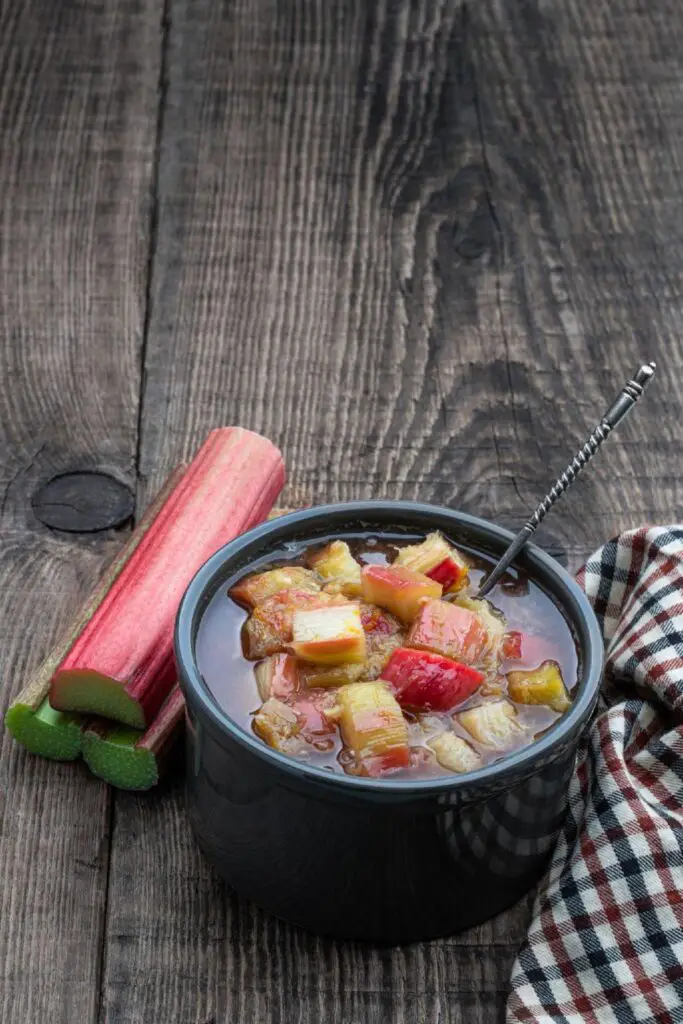
Rhubarb is a versatile vegetable that can be cooked and served in a variety of ways. One of the most popular methods for cooking rhubarb is stewing it with sugar and water to create a sweet-tart sauce.
To prepare stewed rhubarb, start by washing and trimming the stalks, and then chop them into small pieces. In a saucepan, combine the rhubarb with sugar and water and simmer until the rhubarb is soft and the mixture has thickened. Stewed rhubarb can be served warm or cold, and it’s a great topping for ice cream, yogurt, or pancakes.
Another way to cook rhubarb is to roast it in the oven. To roast rhubarb, preheat your oven to 400°F (200°C). Wash and trim the stalks, and then cut them into 1-inch pieces. Toss the rhubarb with sugar and a bit of oil, and spread it out on a baking sheet.
Roast the rhubarb for 10–15 minutes, or until it’s tender and slightly caramelized. Roasted rhubarb can be served as a side dish, or used as a topping for oatmeal or yogurt.
For a more savory preparation, rhubarb can be used to make a tangy sauce that pairs well with meat or fish. To make rhubarb sauce, sauté chopped rhubarb with onion and garlic until the rhubarb is soft. Add a bit of vinegar and sugar, and simmer until the mixture has thickened. Rhubarb sauce can be served with roasted chicken or pork, or spooned over grilled fish.
How To Make Rhubarb Taste Better
Rhubarb is a unique vegetable with a tart and tangy flavor that some people find challenging to appreciate. However, there are many ways to make rhubarb taste better, and even those who are not fans of this vegetable can learn to love it with a little experimentation. Here are five ways to make rhubarb taste better:
- Pair it with sweet flavors: Rhubarb’s tartness can be balanced out with sweetness. Try pairing it with sugar, honey, maple syrup, or other sweet flavors to create a delicious and well-balanced dish.
- Combine it with other fruits: Rhubarb pairs well with many other fruits, such as strawberries, raspberries, and apples. The sweetness of the fruit can balance out the tartness of the rhubarb, creating a delicious flavor combination.
- Add spices and herbs: Rhubarb can benefit from the addition of spices and herbs to enhance its flavor. Cinnamon, ginger, and vanilla are all great options to try.
- Cook it low and slow: Slow cooking can help soften the fibrous texture of rhubarb and mellow its tart flavor. Consider slow cooking rhubarb with sugar and water to create a sweet and tangy sauce.
- Try it in savory dishes: While rhubarb is often used in sweet desserts, it can also be used in savory dishes. For example, rhubarb can be used to make a tangy sauce for roasted meats, or added to a salad for a pop of tartness.
By experimenting with different cooking methods and flavor combinations, it’s possible to make rhubarb taste better and discover new ways to enjoy this unique vegetable.
Conclusion
In conclusion, understanding the consumable rhubarb components and rhubarb plant edibility is essential for harnessing the delights of this versatile plant. The primary focus lies on the edible rhubarb stems, which offer a tart yet delightful flavor. Exploring the various parts of rhubarb you can eat opens a world of culinary possibilities. From sweet pies to tangy sauces, rhubarb’s culinary uses are vast. However, it’s vital to note the rhubarb leaf toxicity – these leaves are not safe for consumption due to their high oxalic acid content.
Mastering the art of cooking with rhubarb stalks leads to delectable creations. With a variety of edible rhubarb varieties available, from the sweet Victoria to the vibrant Crimson Cherry, there’s room for experimentation. The process of preparing rhubarb for consumption involves careful cleaning and trimming, ensuring safe rhubarb consumption.
As you embark on your journey of incorporating rhubarb into your kitchen, remember to explore a plethora of rhubarb dishes. Whether it’s a classic rhubarb pie or a modern rhubarb-infused salad, the potential is endless. In your culinary explorations, never forget the golden rule: focus on the edible rhubarb stems, appreciate its flavors, and savor the unique experiences it brings to your table.
FAQs on Rhubarb Plant Edibility and Preparing Rhubarb for Consumption
Is it safe to eat rhubarb leaves?
No, it’s not safe to eat rhubarb leaves. They contain high levels of oxalic acid, which can be toxic and harmful to humans if consumed. Stick to consuming the edible stalks instead.
What is the best way to cook rhubarb?
The best way to cook rhubarb depends on your preference. Common methods include stewing with sugar for sauces, baking in pies or crisps, and using it in jams. Cooking mellows its tartness and enhances its taste.
Are there different varieties of edible rhubarb?
Yes, there are various edible rhubarb varieties with differing flavors and colors. Popular ones include Victoria, known for its sweet taste, and Crimson Cherry, which offers vibrant red stalks.
Are there different types of edible rhubarb?
Yes, there are different varieties of rhubarb with varying flavors and colors. Some common edible rhubarb varieties include Victoria, Crimson Cherry, and MacDonald.

